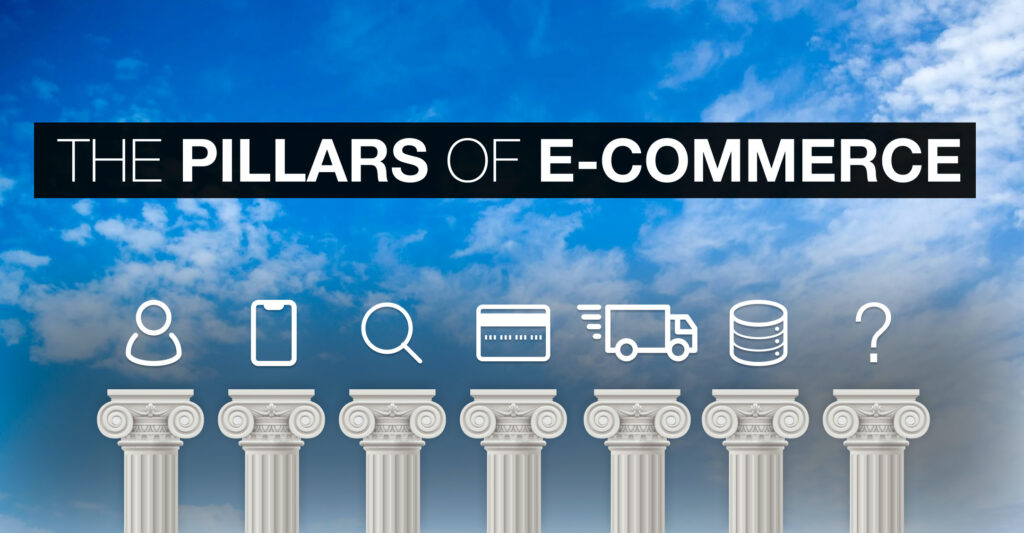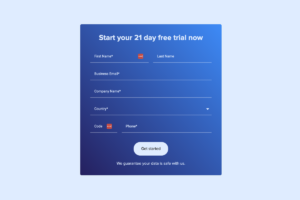Successful e-commerce operations stand on strong pillars. If you are planning to enter a new market or facing challenges in your current e-commerce setup, the below understanding is vital.
What are these pillars?
User – Access – Discovery – Conversion – Logistics – Data – ?
For any e-commerce operation, it is essential that these foundations remain strong and are continuously reinforced during the course of the operation. In an event of a performance dip always investigate whether the problem is rooted in the pillars of your e-commerce operation.
Let’s understand these pillars in detail.
#1 User
How ready is the user? When starting new or in untested markets, assume the least and test your user base.
User base is the easiest to take for granted. It is important to validate that the user is, both, physically and mentally ready to take in and act on all the information you are going to send their way.
- Physicality – Target users must have reasonable visual ability to read small sized text, differentiate colors and contrast, and have adequate motor skills to be able to browse and click on targets. These should be calibrated during the design stage and should be reviewed and optimized during the course of your operations.
- Aptitude – E-commerce has a learning curve. Being comfortable with navigation, search, filters, payment etc. is key to the convenience of an online shopping experience. End user must have the aptitude to browse, select, and transact on your website or app.
- Demand – They must want what you are selling.
- Reachability – Their location must be cost-effectively reachable with ease and in an acceptable time frame.
- Payment Method – The end user must be equipped with one or more methods of payment.
#2 Access
Does your user have access to technology and means to reach your online store? Things to consider here…
- Device – Users must have a device where your website or app can load and function to an acceptable degree.
- Internet – Access to the fast Internet over Wifi or Cellular Data and preferably at a lower cost.
- Power – All these devices must be charged and ready when the user is ready to use them.
- Laws – The laws of the state should not have blocked your site when the user is ready to use.
Singapore, Finland, UK, are examples of countries where access to Internet and technology is easy, affordable and reliable.
See more here… https://www.marketwatch.com/story/the-10-most-digitally-savvy-countries-in-the-world-2016-07-19
#3 Discovery
When your user is ready and has access, your products must be accessible.
- Product Data – All your products must have the basic 4 – Image, Price, Title and Description. The more information you provide to the user, the easier it becomes for them to build trust and make decisions.
- Design & layout – Image clarity, font readability, clear hierarchy – the basics should be in place. Your layouts should be designed to adapt to any screen size. Test on multiple devices.
- Search & Filter– Your search should look for terms in all of the product info not just the title. Spelling mistakes are far more common than we think. Your search should spell check and suggest alternatives. It’s impossible to go through 100s of products. Sizes, colors, price etc filters make a big difference in finding the right item.
- Search engine friendly – 90%+ searches for products start in Google. Make sure that your products are available on the Google store and SEO’ed with clear pictures.
- Social Media friendly – While Google is where people start their shopping, social media is where people spend time. Influencers are based there, so should be your products.
https://blog.hubspot.com/marketing/google-shopping
#4 Conversion
User is ready to buy. All your efforts are bearing fruit. How do you strengthen the most crucial pillar?
- Checkout process – Most of us have been shopping online for more than 10 years. Why is that the checkout process still feels uncertain, like, is it going to happen, not happen, omg please happen!! Check your checkout process on every device being used by your users.
- Multiple payment options – Your users will have different levels of risk taking ability. Give them more options to choose their payment method.
- Security – make sure you are complying with online payment security laws of your target region.
- Fail safes – In case the payment fails, note that the customer is absolutely worried at this point. Be in control. Send out the right communication to the user and create a case for the internal agents. Follow up with the customer.
#5 Logistics
Great so far! and now you owe a new product to your user!
- Stocking – Not technically logistics but make sure website listings and physical stocks are in sync and restocking mechanisms are automated.
- Distribution – Hubs, depots, delivery fleet, personnel, softwares and coordination. It may take some time to get all pieces in place. When you do get it right, optimize. Nothing beats same-day delivery.
- Last mile delivery – The experience you provide here either makes or breaks repeat business. Your delivery agents inadvertently become the face and representatives of your company. Make sure they are trained to handle customers. Order items yourself regularly to evaluate the delivery experience.
- Time Estimation – Try to give a realistic estimation to your customers. It’s better to give a longer shipping duration and deliver early than the other way around.
- Security – Make sure you are able to keep track of the physical location and movement of your products till they are delivered to the customer.
#6 Data
A few successful orders…congrats! Where do we go from here? Let’s look at the data. Analytics & CRM are key tools you need to capture data.
- Collection – Identify key data points through every user journey & product journey and match data to actionable outcome.
- Storage & backup – Depending upon the volume of your business, your data can quickly pile up. Make sure you are using the right backend tools that not only store your data but also make it available to other tools via APIs. Schedule a weekly backup.
- Access – Make most of your data available to all of your team members. If you like data based decision making, then make your data accessible to your team. You never know who is able to identify a pattern or spot an anomaly.
- Reports – Know when to look at absolutes and when to look at trends. Weekly reports can easily get overwhelming. Identify KPIs and track them.
- Action – Don’t just sit on your data, action it!
Every pillar can be further detailed and optimized to be more efficient and more effective. Let this article act as a checklist for your e-commerce operation.
But finally, it’s the people you hire that bind and build your business together. Be it E-commerce or any other business, every company benefits from a strong team. Good and responsible teams are far more productive with their work and more efficient with problem-solving. Listen to your people with open-mind and reward them often. I didn’t want to count this one as a pillar because I believe it is the base, the plinth that carries the other pillars.














